The Samsung Galaxy Note 4 Review
by Joshua Ho on October 15, 2014 9:00 AM EST- Posted in
- Smartphones
- Samsung
- Android
- Mobile
- Galaxy Note 4
GPU Performance
While CPU benchmarks are currently a bit poor in nature, our GPU benchmarks are definitely more helpful when comparing between devices and across platforms. In the case of the Galaxy Note 4 with a Snapdragon 805 we see the same Adreno 420 GPU clocked at 600 MHz that is also used in the Galaxy S5 LTE-A so performance should be relatively similar.
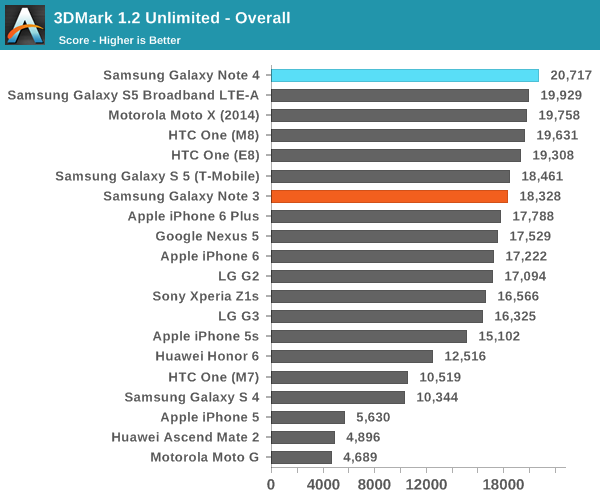
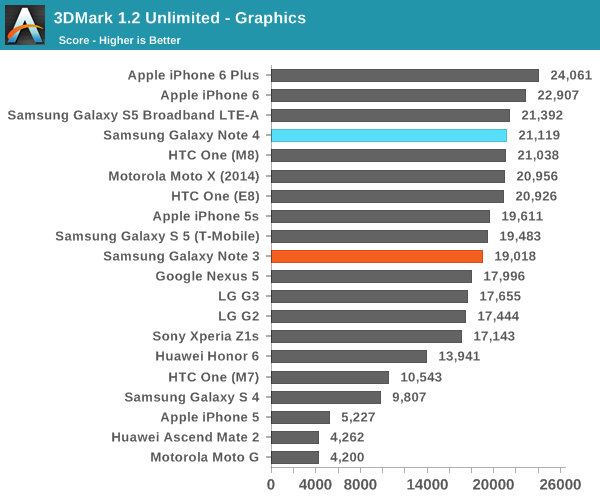

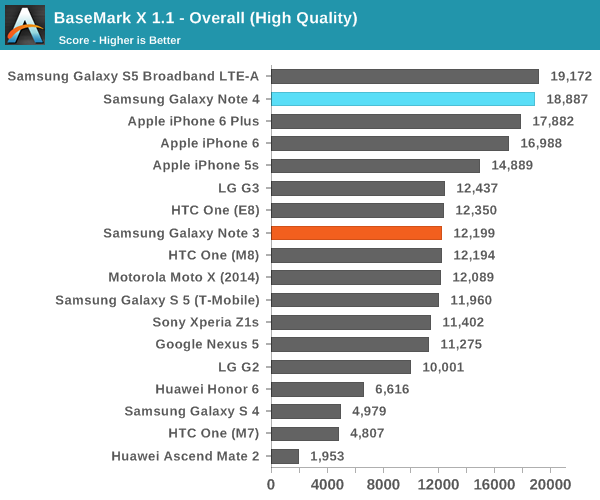
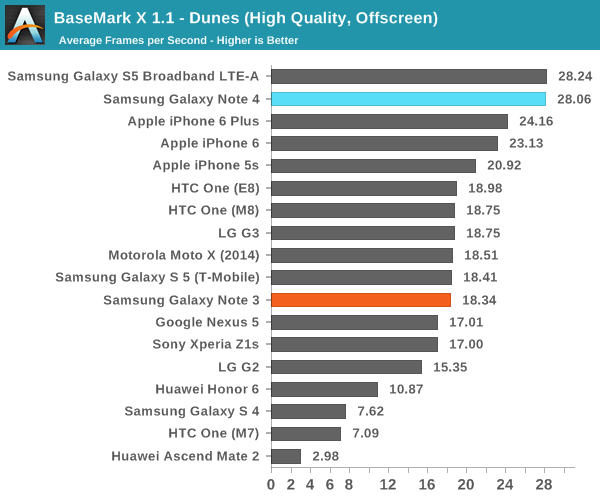

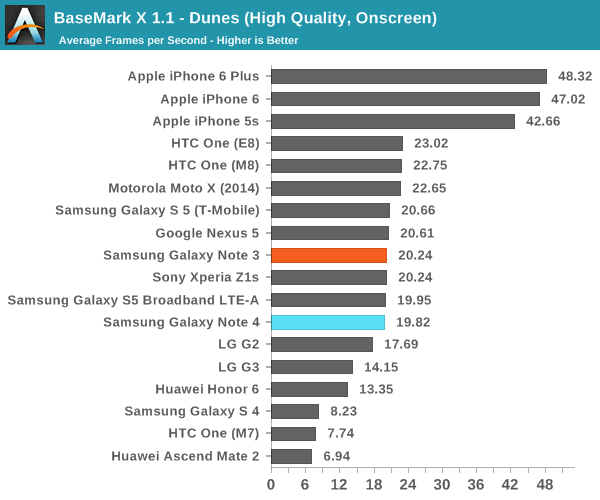

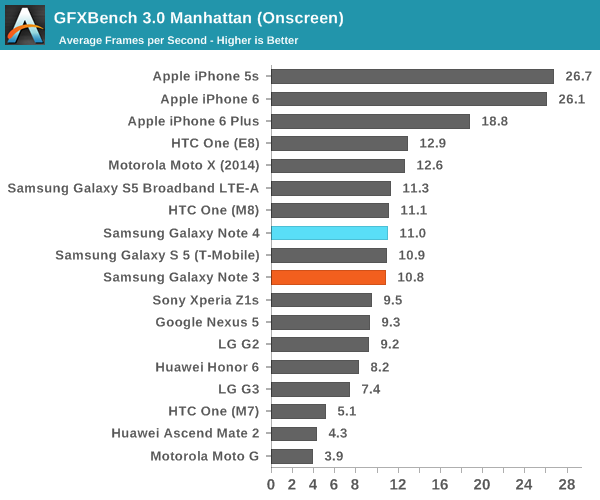
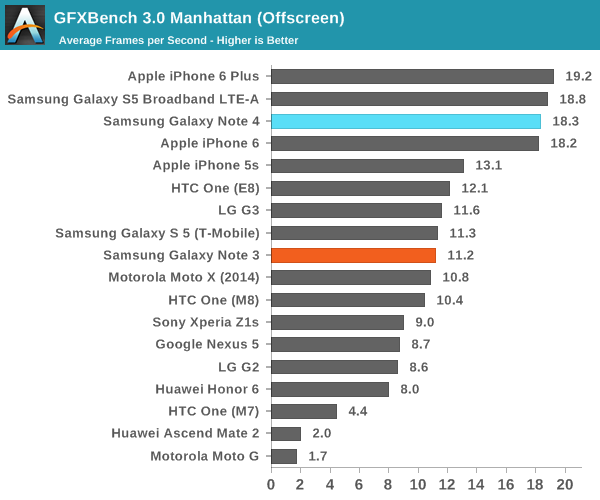
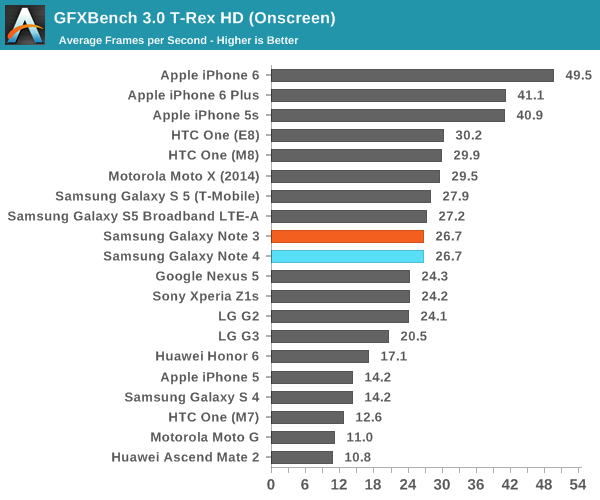
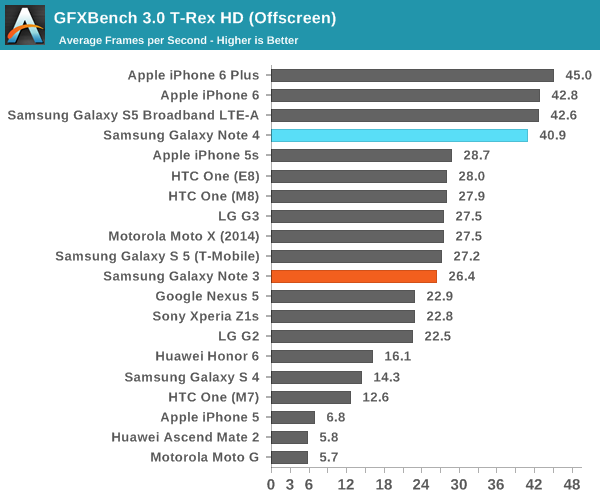
Once again, the Galaxy Note 4's GPU performance line up quite closely with what we expect from the Adreno 420. However, due to the higher 1440p resolution the performance improvements from the Adreno 420 are relatively small or none at all unless the application renders at 1080p.
NAND Performance
While NAND performance is generally an area where it's important to avoid dipping too low, there's are some cases that seem to improve in responsiveness with faster NAND, such as updating apps in the background while doing other tasks or similar cases where data committed to NAND becomes relatively random. In order to test this we use Androbench with some custom settings.


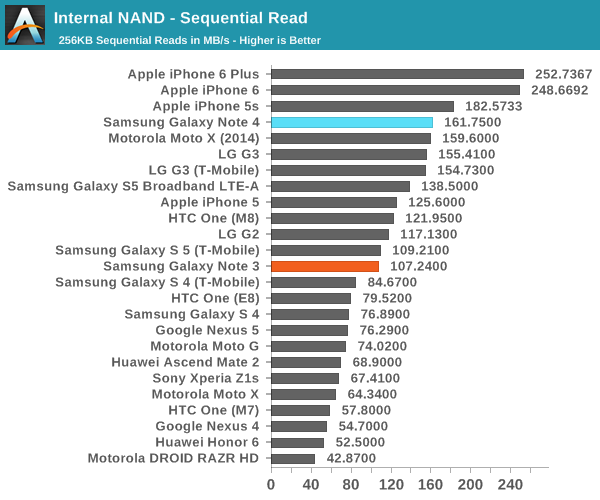
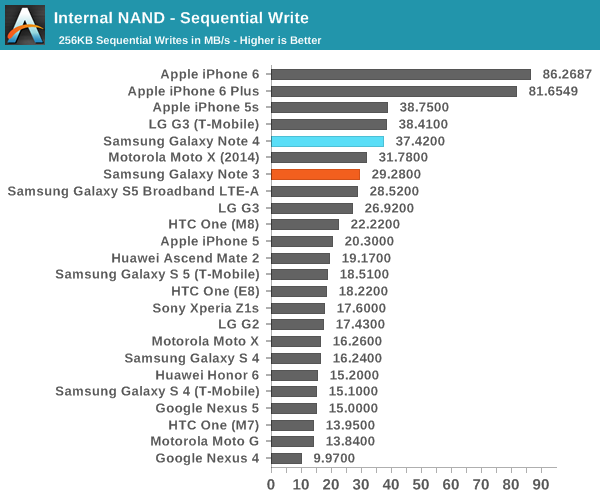
As one can see in the test results, Samsung continues to stay near the front of the pack when it comes to NAND performance. One shouldn't expect storage performance to become a bottleneck on this device.










195 Comments
View All Comments
Donkey2008 - Wednesday, October 29, 2014 - link
You have to love the 3DMark "onscreen" vs "offscreen" results. As long as any Android doesn't have to actually render images on the screen for the user than it is just as fast as an iPhone. ROLMAO.Announcer97624 - Saturday, November 1, 2014 - link
I don't get the point about battery life trailing behind the IPhone 6 plus? The IPhone 6 plus doesn't have a removable battery so on a 16 hour plane ride the IPhone 6 plus is a liability not an asset compared to the Galaxy Note 4's ability to have a few spare charged batteries. While I have the European Galaxy S5 4G LTE I have a battery wallet with six fresh batteries so I can go for most of a week without charging. My girlfriend has an IPhone 5 and is now going to purchase the Galaxy Note 4 specifically because of the non removable battery on all IPhones.Bikerboy89 - Saturday, November 8, 2014 - link
Wow onscreen GPU performance is laughable. Really bad vs the competition from apple and Nvidia. My LG G Flex gets better onscreen performance in gfxbench and the iPhone 6 gets double or triple Note 4. Pretty pathetic for a flagship device.MattL - Wednesday, November 19, 2014 - link
I finally realize why your color accuracy results differ so much from display mate, where you find the iPhone is more color accurate they found the Note 4 more accurate.http://www.displaymate.com/news.html#Color_Accurac...
"Recently some reviewers have published articles contradicting my Absolute Color Accuracy Measurements for the Samsung Galaxy S5. For example, see this recent review in phone Arena. The problem is that these reviewers are not scientists or display experts, and are using canned display calibration software incorrectly in order to test a display, which produces incorrect results and bogus conclusions. Below is a brief semi-technical analysis...
The Color Difference dE used by the Reviewers Incorrectly includes the Luminance: The reviewers are using retail display calibration software products that use a Color Difference measure called dE, which includes a Luminance (Brightness) Error component in addition to the Color Hue and Saturation (Chromaticity) Error component. Using the Color Difference dE is appropriate for setting the display calibration, but dE is Not a measure of Visual Color Accuracy (Hue and Saturation) because it also includes the Luminance (Brightness). The eye sees and interprets brightness and color as two separate visual issues - dE combines them together. So all conclusions based on using dE for Visual Color Accuracy are incorrect.
Our Color Accuracy only includes Color Hue and Saturation: Since the eye sees color and brightness as two separate visual issues I measure and analyze them separately. My published Absolute Color Accuracy measurements and data analysis includes only the Color (Hue and Saturation) Chromaticity Error component Δ(u'v') or d(u'v'), which evaluates just the difference in Hue and Saturation seen by the eye, and is plotted on a 1976 CIE Uniform Chromaticity Color Diagram in all of my articles. This is the correct method for evaluating Visual Color Accuracy (Hue and Saturation). Compare my very precise and detailed Absolute Color Accuracy plots with their crude figure."
Basically you're doing it wrong anandtech
kamhagh - Monday, May 25, 2015 - link
this phone lags on ui and on games like deadtrigger2, don't trust benchmarks! specially when its samsung..... benchamrks are only meaningless numbers!(well useful in some cases)